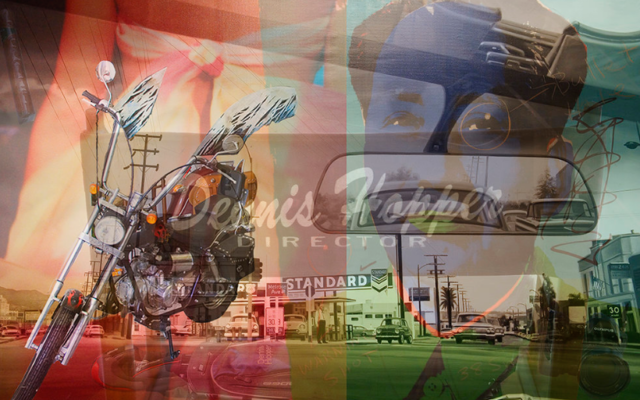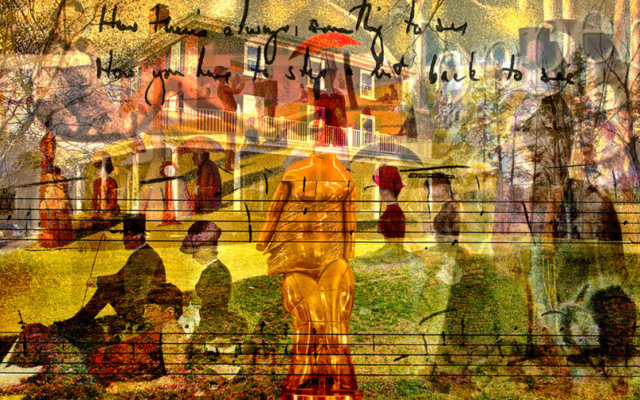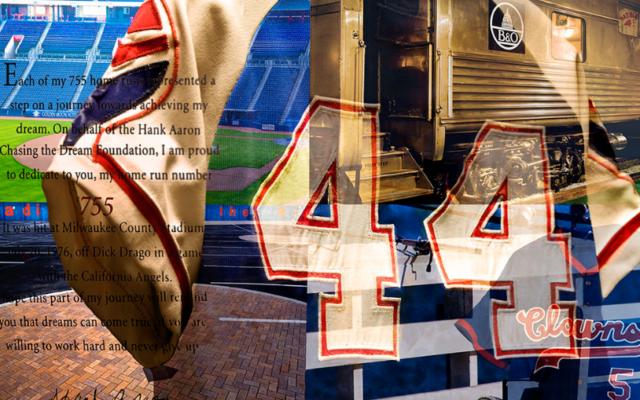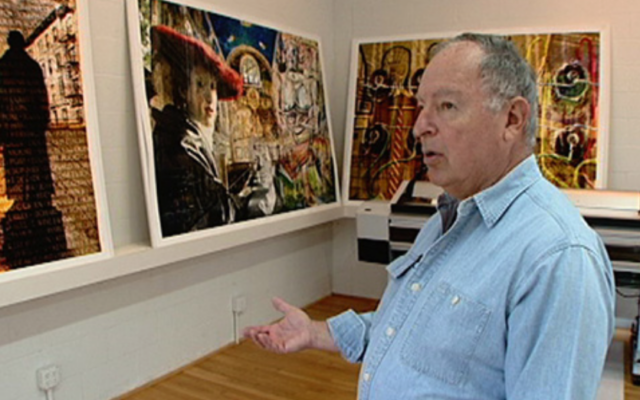Breman Hosts Weingarten in Special Sunday Program
Weingarten’s exhibit of iconic celebrities was created from a number of photographic compositions that rely on computer manipulation.
Photographic artist Robert Weingarten visited The Breman Museum earlier on Sept. 10 to discuss his approach to photography and how he created his works currently on display at the museum.
The exhibit, “Icons – Selections from the Portrait Unbound,” is made up of a series of 14 photographic representations of important figures in American culture, sports, and the arts. But, as its title suggests, none of the celebrities appear in the compositions. As Weingarten told an audience for the museum’s Something Special Sundays program, he started with the idea how to create a symbolic representation of a person’s life.

“If you could do your self-portrait, but you couldn’t photograph yourself, or any member of your family and friends and no pets, what would be the list of things that metaphorically would represent you? One of the things that I say to myself and in picking these various people is, 50 years from now, would I know who they are? And if I don’t know who they are, will I know what they did or understand that what they did was important?”
For his composition representing Hank Aaron, the Atlanta Braves’ baseball great, whom he visited before Aaron died in 2021, Weingarten photographed a rail car in Milwaukee, where Aaron once played baseball. It was said that occasionally Aaron slept on the train, when the team he was playing for at the time visited a city that didn’t welcome African American visitors. He took pictures of the old Fulton County Stadium where Aaron hit his record breaking 715th home run. There were photographs of the baseball from that day and the uniform that he wore.

They were all woven together in a layered composition that he calls a translucent composite. In a short documentary that accompanied one of Weingarden’s earlier shows at the High Museum of Art, the artist spoke of how his work takes advantage of the computer’s ability to digitally manipulate a series of widely disparate images. He then produces large-scale prints of the work on an electronic printer to create a unified composition that engages the eye.
“When I started thinking about the techniques that we have today, I tried to incorporate all that I’ve learned about digital technology and how to use it. I started thinking, well, wouldn’t it be very interesting to create a new language of portrait. For that, I have coined the phrase ‘a translucent composite.’ In a translucent composite. you can present more than one angle, more than one thing, more than one period of time. You are forced to deal with the third dimension. You can not only look at these portraits right to left and up and down. You’re forced to concentrate in and out.”

Although the final effect is of a work that could have been rendered in oils or watercolors, the process of creation, as he describes it, is the opposite of painting.
He describes those artistic choices as inductive, where you start with a blank canvas and keep adding to it until you have a finished work.
He describes how he works as deductive, where he starts with many images and bring them together in the computer and manipulates them, using software, to reach a point where he is satisfied with his creation.

In a piece about the American artist Chuck Close, Weingarten created images taken from Close’s favorite garden and frescos designed by the great Italian artist, Giotto, found on the walls of a medieval church in Italy. His work about the American film star, Dennis Hopper, prominently features the motorcycle from his classic movie, “Easy Rider.”
The Breman has used the exhibit to create a series of programs that began with the music of Stephen Sondheim and includes a mini-festival of Hopper’s performance in three films in mid-October that the museum is screening in partnership with the Tara Theatre.
- Professionals
- Arts and Culture
- Bob Bahr
- Photographic artist
- Robert Weingarten
- The Breman Museum
- Icons - Selections from the Portrait Unbound
- Something Special Sundays
- Hank Aaron
- Atlanta Braves
- Fulton County Stadium
- High Museum of Art
- translucent composite
- Chuck Close
- Giotto
- Dennis Hopper
- Easy Rider
- Stephen Sondheim
- Tara Theatre




comments